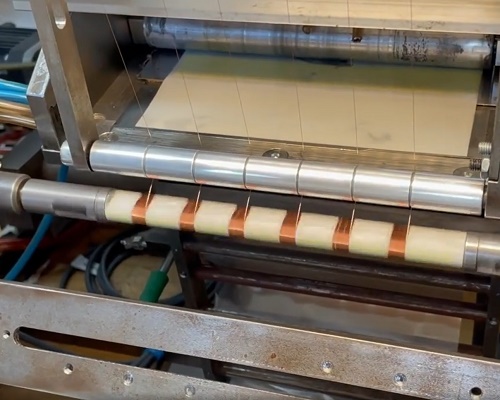Introduction to LUNDAHL Transformers
Lundahl transformers follow a long tradition...
Unnecessary to say this company is in good hands! Founded in 1959 by Lars and Gunnel Lundahl in the big town of Norrtalje, in the Stockholm region. They started with products for the Swedish Radio, Today, their transformers are a #1 choice for OEM HiFi and industrial companies all over the world, while the HiFi business is growing over proportional. In 2024, Helana Pantzare has become the new CEO for the company, while Per Lundahl will be in an advising role for an intermediate period.
Nordic is what these people are. They are direct and correct to deal with. Not producing golden words, but products, which can speak for themself. Lundahl is in the middle price field, with a top class product. From my view as an engineer, their datasheets show their honesty. They specify tube transformers driven by a high impedance source, such as a tube. Whereas the Japanese bring their data sheets at the same level as Lundahl by driving the transformer with zero ohms source. We al know, such tubes don't exist.
Do you know what means the word transparency to "Hi-fi" users? It means, the product adds nothing "from itself" to the music signal. There is no coloring, no change to the sound. This effect like "what goes in, is what comes out" , it is the meaning of transparency, not just in HiFi. Or like Per Lundahl used to say it: "When you can 'hear' a product, it is not ours!"
AH! So what else is so special about the Lundahl transformers? The answer is, the flexible configuration. Audio transformers are wound in many layers, with primary and secondary are interleaved. Most manufacturers connect the layers already inside the transformer, and only supply to you the resulting "primary" and "secondary".
Lundahl works different. Most transformers provide primary and secondary a number of windings. The user can now connect these in parallel or in series, or a combination of series and parallel. This gives primary and secondary multiple impedances. These are listed in the datasheet, as "Alternative A", "Alternative B", etc. By this, you can get a wide range of windings ratios with just one transformer! This method is ideal for the DIY user, because now you can actually try out what sounds best, and not need to believe what (so called) experts tell you. Frankly, it is simply impossible to tell in advance, what primary impedance will sound best with YOUR speakers, in YOUR listening room, and YOUR personal judgment of what YOU want to hear. That is because the amplifier and speakers and the listening room interact. To get a first idea of this, try your 8 Ohms speakers on the 4 Ohms output or vice versa. Sure you will notice a sound difference. Don't be surprised when the 8 Ohms speaker sounds better at the 4Ohms output. It doesn't have to be like that, but it's nothing unusual. It's very rare if an 8 Ohms speaker is 8 Ohms indeed. They can be just as well 5 Ohms or 12 Ohms, speaker manufacturers don't tell you, and you can't measure speaker impedance with an Ohms meter. . Frankly this is a mess. Also the speaker impedance is frequency dependant a lot.
What does the above mean? Well, the best impedance is the one you think sounds best. The way to go is, take a Lundahl transformer and try out all it's impedances. You really have to try it out! It cost you nothing extra but a little effort. Use for this our Impedance Switch Boards for more convenience!
Also this flexibility counts for the Moving Coil transformers. Specially manufacturers of expensive MC Transformers blow a cloud of smoke around the specifications. So just take the Lundahl MC transformers, the ones that offer you two or three step up ratios. Or even up to five (!) step up ratios with our impedance switch Board EE20.
Choose the one that sounds best! (or try our MC Boards). Do you want to hear the same story for inter stage transformers? Probably not.. but you wouldn't be the first who bought a "fixed ratio" inter stage transformer with the wrong ratio. Look at the Lundahl LL1660 inter stage transformer. LL1660 is a masterpiece of versatility. This family of transformers offers over one hundred ways (!) to connect them. Push Pull, SIngle Ended, Parafeed, you name it, it is possible. Tho get this done quickly on the bench, we have developed the PCB EE27.
Hopefully this text made you a little more curious about what Lundahl transformers can do.
